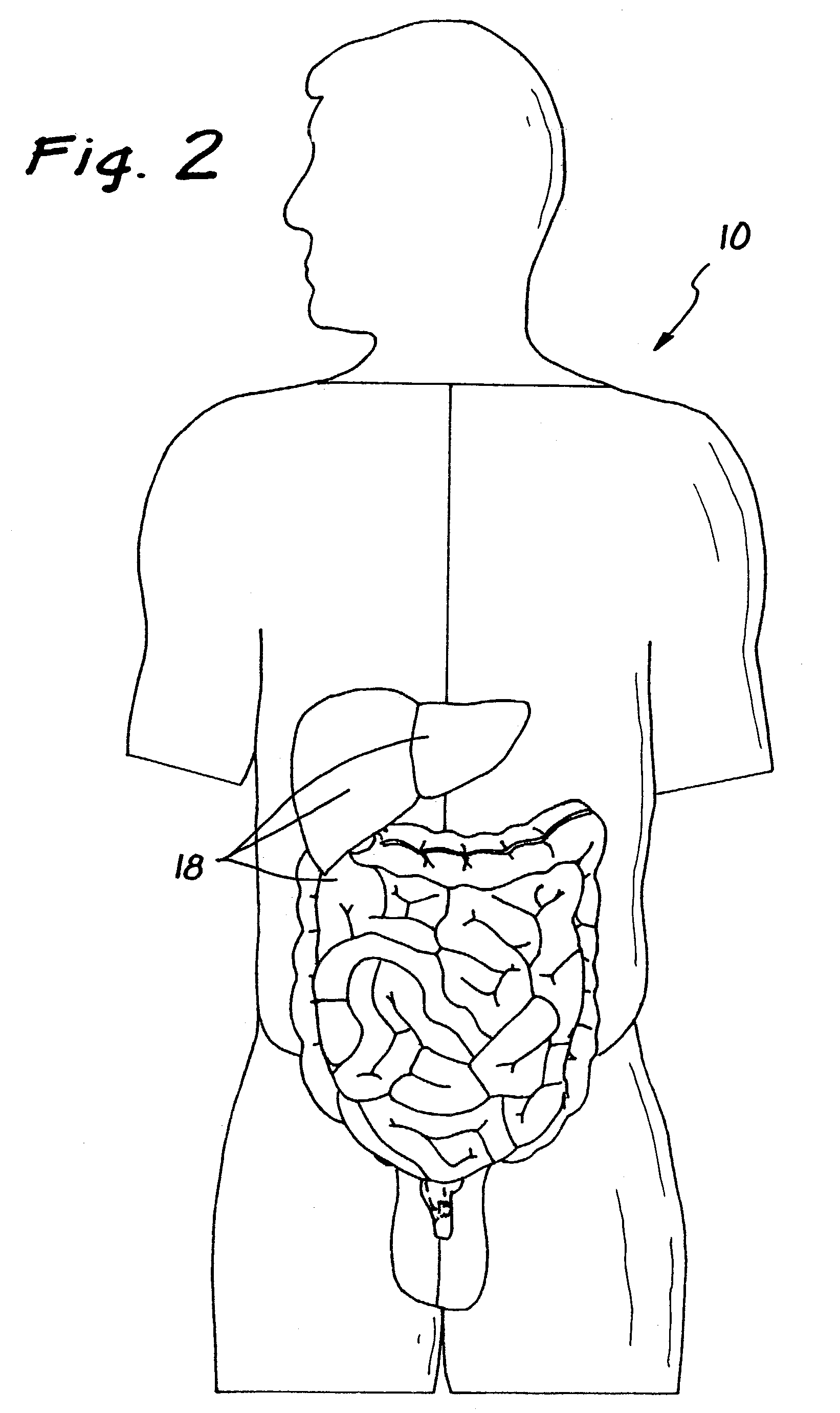Surgical access apparatus and method
a technology of surgical access and apparatus, applied in the direction of catheter, application, infusion syringe, etc., can solve the problems of many inadvertent injuries, poor visual aid, and inability to insertion the needle without visual aids,
- Summary
- Abstract
- Description
- Claims
- Application Information
AI Technical Summary
Benefits of technology
Problems solved by technology
Method used
Image
Examples
Embodiment Construction
[0048]A patient is illustrated in FIG. 1 and designated generally by the reference numeral 10. The patient 10 is shown in a prone position with his abdomen 12 facing upwardly as he is readied for laparoscopic surgery. In this process, minimally invasive surgery is undertaken through an abdominal wall 14 and within an abdominal region 16 of the patient. This laparoscopic surgery commonly involves internal organs 18 as best illustrated in FIG. 2. Rather than accessing these internal organs 18 through a large opening in the abdominal wall 14, laparoscopic surgery calls for minimal invasion of the abdominal wall 14 through tubular access devices, commonly referred to as trocars. These trocars are designated by the reference numeral 20 in FIG. 3.
[0049]The trocars 20 are placed through small openings in the abdominal wall to provide access for visualization and surgical instruments. They are commonly provided with sharp points which although facilitating puncture of the abdominal wall, ca...
PUM
 Login to View More
Login to View More Abstract
Description
Claims
Application Information
 Login to View More
Login to View More - R&D
- Intellectual Property
- Life Sciences
- Materials
- Tech Scout
- Unparalleled Data Quality
- Higher Quality Content
- 60% Fewer Hallucinations
Browse by: Latest US Patents, China's latest patents, Technical Efficacy Thesaurus, Application Domain, Technology Topic, Popular Technical Reports.
© 2025 PatSnap. All rights reserved.Legal|Privacy policy|Modern Slavery Act Transparency Statement|Sitemap|About US| Contact US: help@patsnap.com



